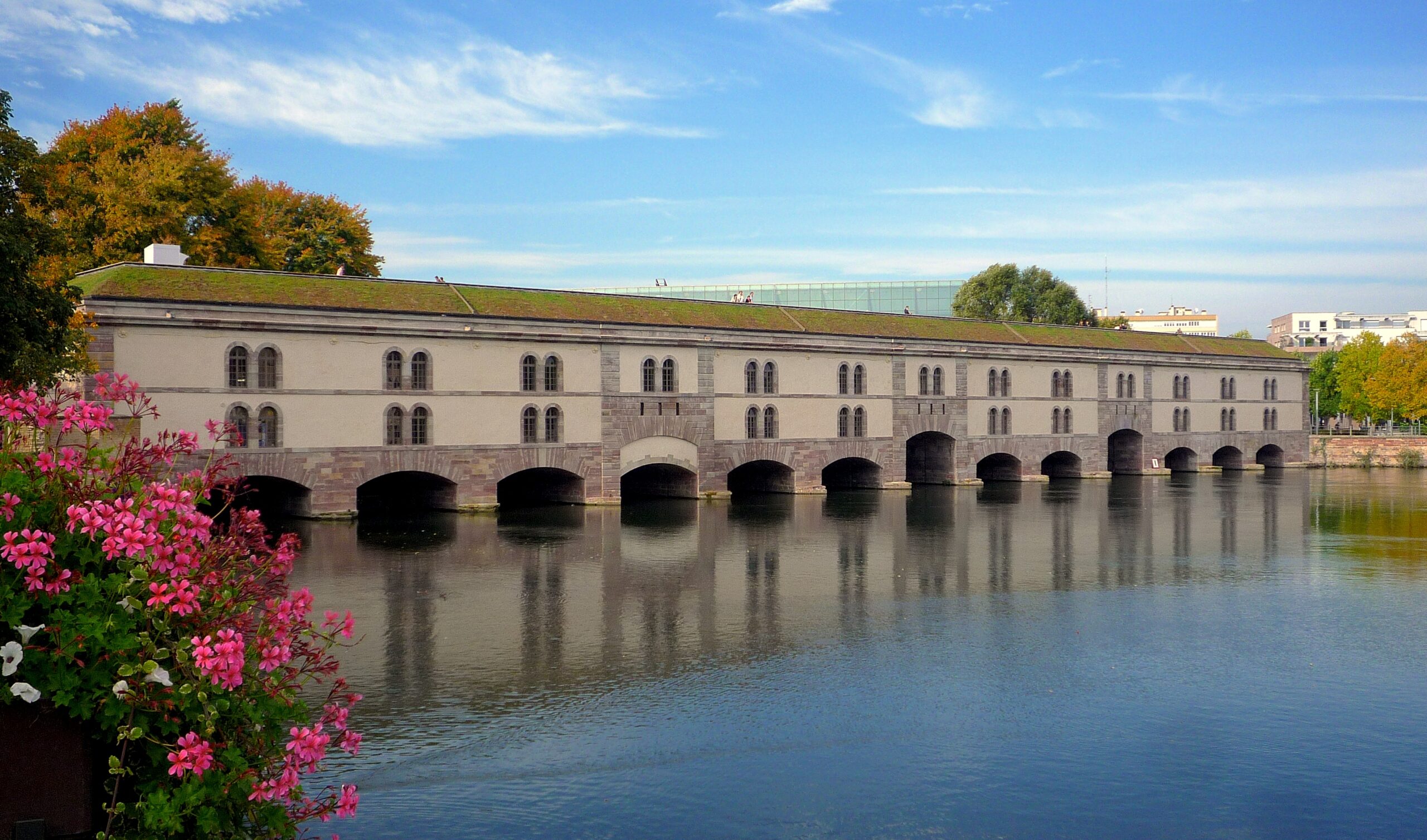The Barrage Vauban, an architectural marvel steeped in history, graces the cityscape of Strasbourg, France, as a testament to the military engineering prowess of the 17th century. Named after the renowned military architect Sébastien Le Prestre de Vauban, this formidable structure serves not only as a symbol of defense but also as an iconic landmark and an observation deck offering panoramic views of the picturesque surroundings.
Constructed between 1686 and 1700 as part of Strasbourg’s fortifications, the Barrage Vauban straddles the River Ill, connecting the Grande Île (historic center) to the medieval district of La Petite France. Its primary purpose was to control the water flow of the river, acting as a dam and providing a means to flood the surrounding areas in times of conflict, thereby creating a natural barrier against potential invaders.
The Barrage Vauban is a testament to Vauban’s innovative military engineering techniques. The structure combines elements of both form and function, showcasing its defensive purpose while also serving as an aesthetically pleasing bridge and observation platform. The design incorporates classical features, including Doric columns and a balustrade adorned with sculptures, adding an artistic touch to its military functionality.
The most distinctive feature of the Barrage Vauban is its rooftop terrace, accessible by a winding staircase. This elevated vantage point offers breathtaking panoramic views of Strasbourg, including the medieval houses of La Petite France, the cathedral spire, and the surrounding cityscape. The strategic location of the Barrage Vauban provides visitors with a unique opportunity to appreciate the architectural beauty and historical significance of Strasbourg from above.
The Barrage Vauban has undergone several transformations over the years. Originally conceived as a military structure, it adapted to changing times and purposes. In the 19th century, it was repurposed as a toll station for river traffic, and in the 20th century, it evolved into a museum dedicated to the history of Strasbourg. Today, it continues to attract both history enthusiasts and casual visitors who appreciate its dual role as a historic site and an unparalleled viewpoint.
The structure’s role as a dam has significantly diminished over the years due to advancements in hydraulic engineering and changes in the city’s infrastructure. Nevertheless, the Barrage Vauban remains an integral part of Strasbourg’s cultural and architectural heritage, contributing to the city’s distinctive skyline and offering a tangible link to its military past.
In 2018, the Barrage Vauban, along with other fortifications designed by Vauban, was collectively recognized as a UNESCO World Heritage site. This designation underscores the global significance of Vauban’s contributions to military architecture and fortifications during the late 17th century.
In conclusion, the Barrage Vauban stands as a captivating blend of military history, architectural brilliance, and scenic beauty in the heart of Strasbourg. Its dual identity as both a historical defense structure and an observation deck highlights its enduring appeal. As visitors ascend its staircases to take in the panoramic views, they not only witness the picturesque landscape of Strasbourg but also engage with the living history encapsulated in the stones of this remarkable structure. The Barrage Vauban remains a captivating testament to the convergence of military strategy and architectural ingenuity that defined the city’s past.



